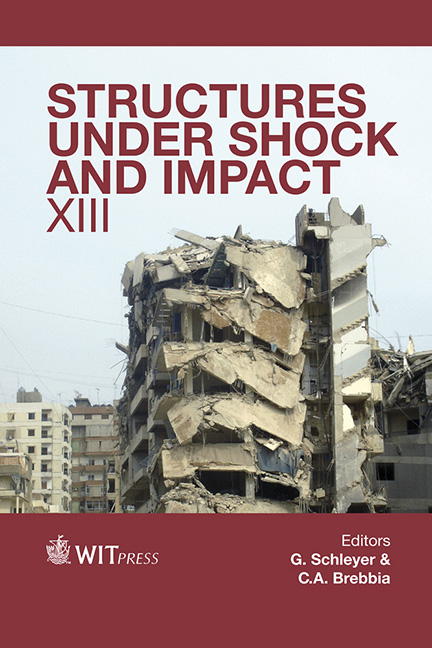The Terminal Ballistic Experimental Analysis Of An Empty And Full Water Tank
Price
Free (open access)
Transaction
Volume
141
Pages
13
Published
2014
Size
1989 kb
Paper DOI
10.2495/SUSI140171
Copyright
WIT Press
Author(s)
M. R. Aziz, W. Kuntjoro & N. V. David
Abstract
This paper presents the footage from a hi-speed camera used in the experiment on both cases of a non-filled and water-filled aluminium tank. The objective was to determine the failure stages that will be used as a reference in the simulation works later on. The tank was impacted by fragment simulating projectiles (FSP) at 260 m/s for the non-filled tank and 972 m/s for the water-filled tank. The aluminium tank was 3 mm thick, 150 mm wide and 750 mm long. The ends of the tank were closed with two Polymethyl methacrylate (PMMA) windows. The gas gun was used to launch the projectile and a digital chronograph was used to capture the velocity of the FSP that impacted the tank. For recording purposes, a digital high speed camera with the capability of 250,000 frames per second (max) and the highest resolution of 1024 x 1024 was used. For the data acquisition and processing, Photron Fastcam Viewer (PFV) software was used. The test was conducted at the Science and Technology Research Institute for Defence (STRIDE), Batu Arang, Selangor, Malaysia. The results showed four main failure stages for the non-filled tank, these being, first contact between FSP and the tank, partial perforation, full perforation with FSP and plug still intact and lastly separation of FSP and plug. Meanwhile for the water-filled tank, there were seven main failure stages, which were first contact between FSP and the tank, partial perforation, full perforation, drag phase, cavity phase, bounce wave event and the collapse of the cavity. Keywords: fragment simulating projectile, high speed camera, tensile test, terminal ballistic.
Keywords
fragment simulating projectile, high speed camera, tensile test,terminal ballistic.





